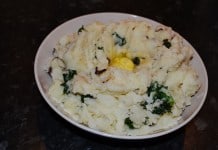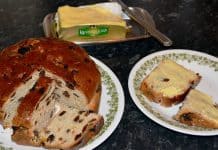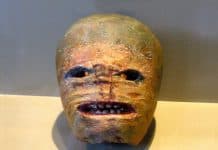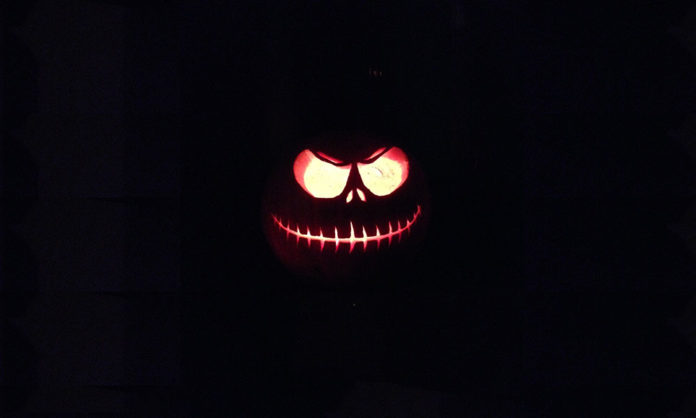
This Hallowe’en, in the tiny Irish-speaking area of County Waterford called An Rinn, a centuries-old tradition will be suspended for the first time ever due to the strict but necessary Covid 19 restrictions. The rhyme Rann na Samhna won’t be chanted at the doors, children disguised in fancy dress and rags with blackened faces won’t sing and play their music at the houses, nor will they be welcomed in to entertain those inside. This year, the tables usually laden with sweets, apples and money for the young visitors will remain bare.
Festival tradition
Hallowe’en always was, and still remains a much celebrated festival in An Rinn, and in spite of the huge influence of the media and the commercial pressures it brings, some of the ancient customs still remain to this day.
As well as being called Hallowe’en, it was called Snap-apple Night or Oíche na hAdhairce (The Night of the Horn), a reference to the cows’ horns, picked up by children on various farms, cleaned and used as a trumpet by blowing into the narrow pointed end. Peig Uí Réagáin, born in 1905 in the village of Baile na nGall, recalls the traditional practice of merrymaking on the 31st of October every year:
“My friends and myself considered the cow’s horn a very ‘posh’ piece of equipment, our own trumpets being made by heating some water in a bottle over the fire and snapping the end of the bottle off when the water boiled. We then blew into the mouth of the bottle, producing the same trumpet effect as the cows’ horns did. We went from door to door chanting the rhyme and the people loved to see us coming.”
The coming of winter
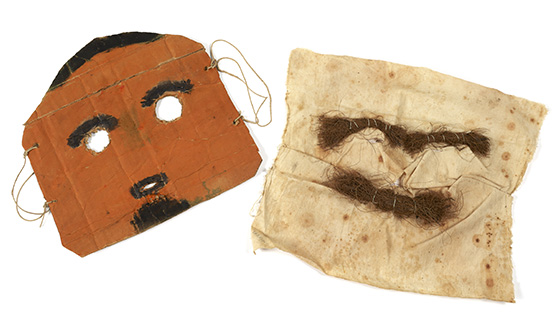
Hallowe’en was seen as a time when the community prepared for the coming of winter. The year was almost spent, nights were getting longer and this was the time when it was believed that the departed were allowed to return to visit their loved ones. Children still go from door to door and recite the short version of an ancient rhyme in Irish, which is unique to this area.
This writer remembers a childhood during the 1960s and early 70s when groups of children walked for miles around the parish to recite the rhyme, sing songs and play music at the doors in return for money, nuts, sweets, barm brack and plenty of praise.
The trumpeting sounds of rival groups blowing a cow’s horn, drifting on the air in the distance one dark and very still Hallowe’en night while walking up through Baile na nGall village will always remain a nostalgic childhood memory of my own.
Nowadays children are driven around by their parents and a few have even abandoned the traditional rhyme in favour of the “Trick or Treat!” cry of the crude Hallowe’en industry.
Blessings and curses
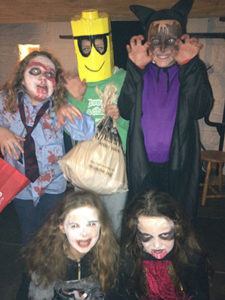
For most houses it was considered an honour that the groups of young children and even the not so young would come to the door. Upon reciting the rhyme, Peig and her friends were usually rewarded for their trouble with a few pennies or slices of barm brack. They would thank the woman of the house with greetings which, translated, meant: “May God increase your wealth, ma’am!” and “God spare you your health!”
But on the rare occasion where a begrudging response was met with at the door, other words were uttered which Peig shared somewhat reluctantly with me. “May no crow ever shit on your dung-heap! And furthermore, may you never even have a dung-heap on which a crow could shit!” Another retort the children used was: “May the cockrels nip your backside with their beaks as you pass by on your way to hell!” Undaunted by the refusal received, these and other blighted blessings were hurled over their shoulders by the more audacious as they beat a quick retreat!
Ghosts and spirits
In a parallel with today’s horror movies, this was a time of fear and thrill combined, as people relished the prospect of frightening each other with stories of local ghosts who would be watching from every dark corner to ‘get’ them. The ‘Black Man’s Ghost’ was believed to inhabit the Cunnigar beach, where he was said to have guarded a treasure lost from an old shipwreck. Further east in Baile na nGall and Helvic there was ‘The Cliff Tramp’ and ‘The Quay-nook Tramp.’
Always on the alert for the cry of the Banshee who foretold the death of someone in the neighbourhood, Peig wondered on mature reflection, whether it was real or simply the wailing of a distant hound or some such animal. She felt that the reluctance to go out in the dark caused by the threat of ghosts served the purpose of keeping the young safe at night.
To what did she attribute the disappearance of all the ghosts? The ESB! When the electric light came to An Rinn in 1954, all the ghosts began to melt away, she said with a laugh. On a more serious note she lamented the fact that today’s children were getting more and more difficult to please and entertain and she blamed it on television, technology and parents’ desires to over-pamper and shower them with material goods.
Hallowe’en games
One of the many games played indoors at Hallowe’en was called Sciob or Snap. This was the well-known game of placing an apple in a basin of water on the floor. The participants knelt and with hands tied behind their backs tried to catch the apple with their teeth. Sometimes a coin was put in and whoever could get the coin in their mouth – a very rare occurrence – was allowed to keep it.
Another game was the placing of a cherry on a plate of flour and having to lift it on a knife, the unsuspecting participant often having their face pushed into the flour by a rival while concentrating on the effort.
One of the most exciting games Peig remembered was where a wooden cross with pointed ends would be hung horizontally from the rafters. On the alternate points were fixed charred corks and sweet apples. The device was spun and the fun was in trying, with hands tied behind the back, to get a bite of the apple without having one’s face blackened, a task which usually proved impossible!
Another more adventurous version of the Snap-apple games was the hanging of a person by the legs with a rope from the roof’s crossbeam, hands tied behind and face almost at floor level. They were then swung by their rivals and had to try to pick up an apple from the floor with their teeth as they swayed from side to side!
Many games of divination were played, one of them involving placing nuts on a shovel and roasting them on the fire to see in whose direction the first nut would jump when it burst, a sign that he or she would be the first or next in the family to be married. The night was then finished off by plenty of ghost stories.
Sadly, but necessarily in this year of 2020, the celebration of the ancient festival of Samhain, or Hallowe’en will have to be an indoor family event for those wishing to carry on the tradition. We may snap at an apple in a basin of water or eat barm brack for supper, but there won’t be any knock on the door to announce music and song on the threshold, and for the first time in many centuries the ancient rhyme won’t be chanted.
Let’s hope it can all be put right again next year.
Áine Uí Fhoghlú is a poet and writer who lives in An Rinn, Co. Waterford, Ireland. Additional information about her book “Scéalta agus Seanchas – Potatoes, Children and Seaweed”, as well as her other works may be found at www.waterfordwriter.com

